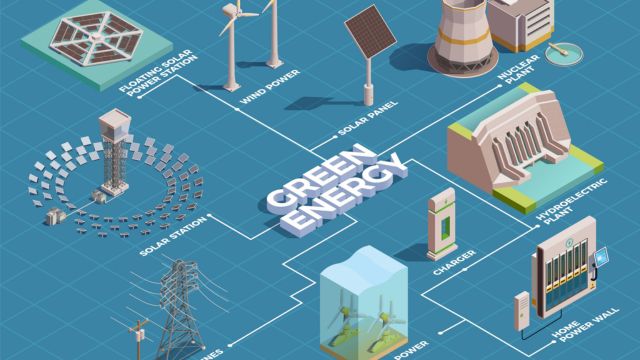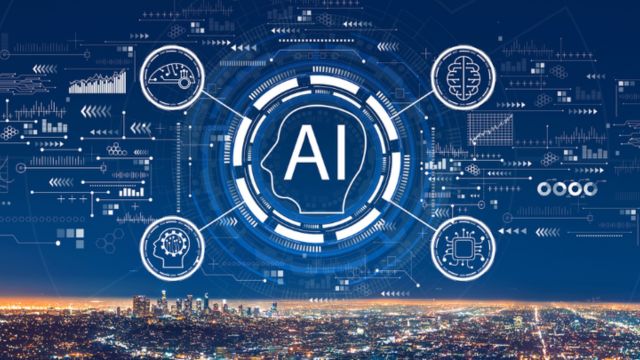One of the most urgent worldwide issues of our day, climate change affects the environment, economics, and human health among other things. Technology has become increasingly important in the fight against climate change as the planet struggles with rising temperatures, severe storms, and declining natural resources.
From renewable energy solutions to sophisticated data analytics, technology is changing our monitoring, mitigating, and adaptation capacity to climate effects. This post looks at some of the most powerful technologies under use to counteract climate change and their real-world results.
1. Renewable Energy Technologies
The growth and general acceptance of renewable energy sources marks one of the most important ways that technology might help to slow down climate change. By helping to decrease reliance on fossil fuels, technologies include solar panels, wind turbines, and hydroelectric systems are thereby cutting greenhouse gas emissions.
- Solar Power: Solar technology has advanced significantly, with more efficient photovoltaic cells and large-scale solar farms now powering entire communities. Innovations like solar batteries enable energy storage, ensuring a stable supply of clean power even when the sun isn’t shining.
- Wind Energy: Wind turbines are being deployed onshore and offshore to harness wind power. Offshore wind farms, in particular, are becoming more prevalent, providing large-scale, low-carbon energy solutions.
- Hydropower: Modern hydropower systems use dams and flowing water to generate electricity without emitting harmful pollutants. Additionally, small-scale hydro projects are being implemented in rural areas to provide clean energy access.
2. Smart Grid Technology

Smart grids using digital communication technology to more effectively control electricity consumption are substituting for conventional power systems. Smart grids may balance supply and demand, include renewable energy sources, and lower general energy waste.
- Energy Monitoring: Smart meters allow consumers to monitor their energy usage in real time, encouraging more sustainable consumption patterns.
- Demand Response Systems: These systems automatically adjust power usage during peak demand periods, preventing blackouts and reducing reliance on non-renewable power sources.
- Grid Optimization: Advanced algorithms analyze data to detect inefficiencies and optimize power distribution, minimizing energy loss.
3. Carbon Capture and Storage (CCS)
A revolutionary technology called carbon capture and storage (CCS) gathers carbon dioxide emissions from power plants and industrial activities prior to their entering the atmosphere. After then, the captured CO₂ either finds use in other projects like improved oil recovery or is kept beneath ground.
- Post-Combustion Capture: This technique captures CO₂ from the flue gases of power plants, using chemical solvents to absorb and separate the carbon.
- Direct Air Capture (DAC): DAC systems extract CO₂ directly from the atmosphere, making it a viable solution for removing existing greenhouse gases.
- Geological Storage: The captured CO₂ is injected into deep geological formations, such as saline aquifers or depleted oil and gas fields, where it can be stored permanently.
4. Internet of Things (IoT) for Environmental Monitoring
The Internet of Things (IoT) is changing our reaction to and monitoring of hazards connected to climate change. To gather real-time data on air quality, water levels, temperature, and carbon emissions, IoT sensors are being placed all across oceans, forests, and towns.
- Smart Sensors: Environmental sensors track pollutants, greenhouse gas emissions, and temperature fluctuations, providing valuable data for climate scientists and policymakers.
- Predictive Analytics: Advanced data analytics use IoT data to predict climate patterns and assess potential risks, such as floods, droughts, and heatwaves.
- Wildlife Monitoring: IoT-enabled drones and camera traps monitor endangered species and their habitats, helping to prevent habitat destruction and biodiversity loss.
5. Artificial Intelligence (AI) and Machine Learning
By analyzing intricate datasets to find trends, forecast climate change, and maximize resource management, artificial intelligence (AI) is significantly helping to slow down climate change.
- Energy Management: AI systems optimize energy consumption in buildings, factories, and data centers, reducing overall energy use.
- Climate Forecasting: Machine learning algorithms analyze historical climate data to predict weather patterns and extreme events, enabling better preparedness and response.
- Agriculture Optimization: AI-powered tools assess soil health, water levels, and crop growth, helping farmers implement sustainable agricultural practices that reduce resource consumption.
6. Blockchain for Climate Transparency
Environmental reporting and carbon trading are seeing improvements in openness and responsibility using blockchain technology. Tracking carbon credits, emission reductions, and green investments, it offers a safe, unchangeable ledger.
- Carbon Trading Platforms: Blockchain-based platforms facilitate the buying and selling of carbon credits, ensuring that credits are not double-counted or fraudulently claimed.
- Supply Chain Transparency: Blockchain tracks the environmental impact of products throughout the supply chain, allowing consumers to make more sustainable purchasing decisions.
- Green Finance: Blockchain is also being used to verify the allocation of green bonds and climate-related investments, ensuring funds are used for their intended purposes.
7. Sustainable Transportation Technologies
One main contributor to world carbon emissions is the transportation industry. More sustainable mobility is being facilitated by developments in smart transportation networks, electric cars (EVs), and autonomous vehicles.
- Electric Vehicles: EVs produce zero tailpipe emissions and can be powered by renewable energy, significantly reducing their carbon footprint.
- Autonomous Vehicles: Self-driving cars optimize fuel consumption and reduce traffic congestion, leading to fewer emissions per mile.
- Electric Public Transit: Electric buses, trains, and trams provide a cleaner alternative to fossil fuel-powered transportation, particularly in urban areas.
Conclusion
Technology is a great friend in the battle against climate change, not only a tool for contemporary comfort. From smart grids and renewable energy systems to artificial intelligence-powered climate forecasts and blockchain for carbon monitoring, technological developments are changing our approach to environmental problems.
Though these developments have great promise, their effect will rely on public knowledge, strong policy support, and general acceptance. Using these innovative technology will help us to lessen the negative consequences of climate change and approach a sustainable future.













